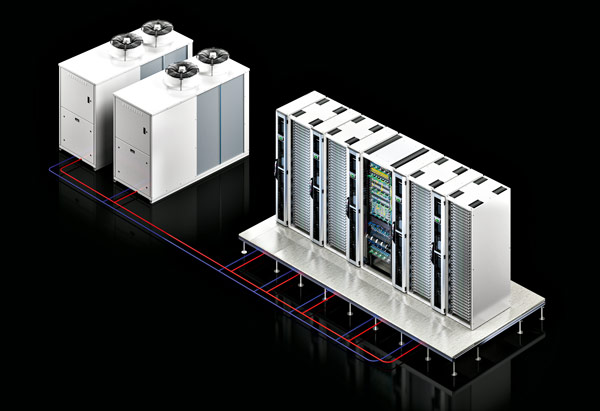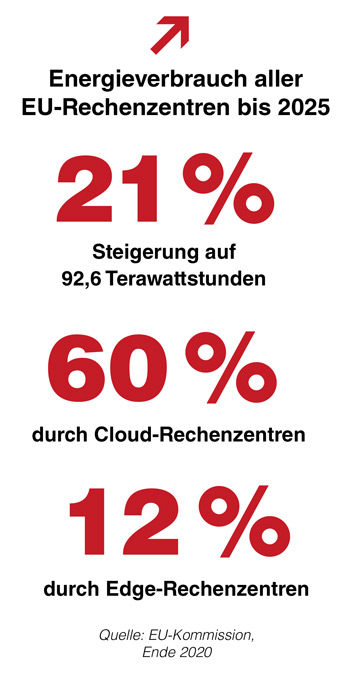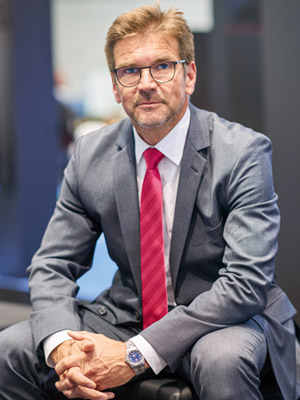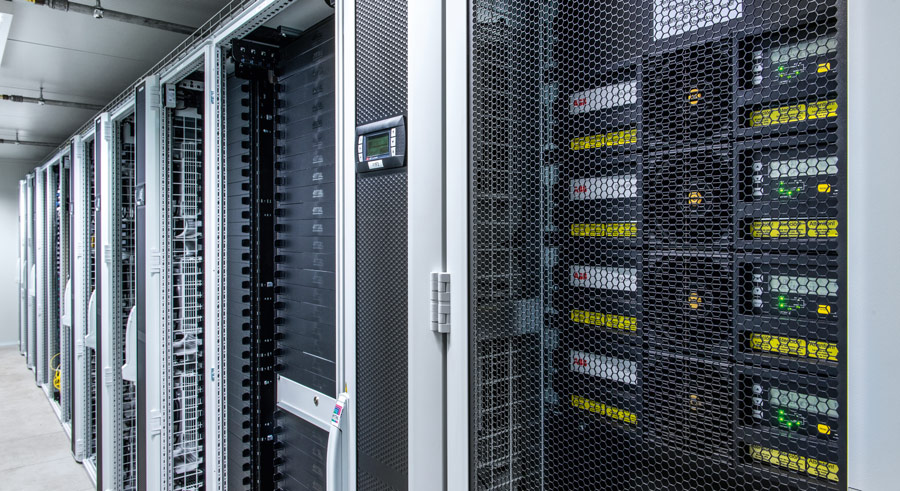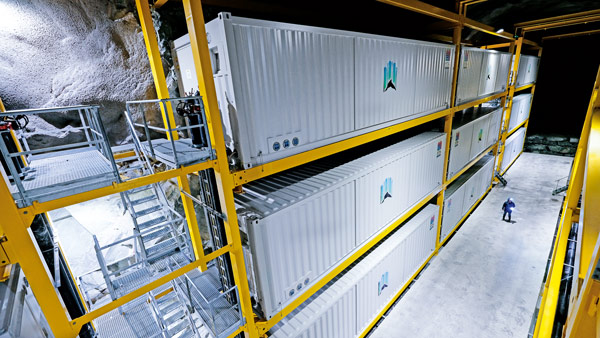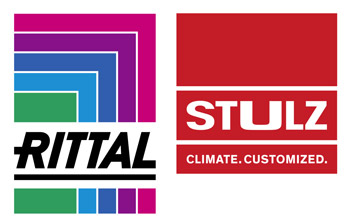In 2018, data centres in EU member states consumed 76.8 terawatt-hours of power, equating to around 2.7 per cent of total energy consumption. That was the finding of a study published by the EU Commission at the end of 2020. According to this study, the increase in energy consumption between 2010 and 2018 was nowhere near as high as many had predicted in 2010. The reason cited for this lower energy consumption is the clear progress that has been made in improving energy efficiency. Nonetheless, the study claims that advancing digitalization and particularly the increasing availability of cloud services will cause energy consumption to increase by another 21 per cent to reach 92.6 terawatt-hours by 2025.
While cloud data centres accounted for 10 per cent of the total energy consumption of EU data centres in 2010, the study found this share had grown to 35 per cent by 2018. It is set to rise to around 60 per cent by 2025. This also shows where the biggest growth potential lies for data centres. The proportion of small edge data centres that are needed on-site will also grow considerably in the future. By 2025, edge data centres could account for 12 per cent of I the energy consumption of data centres in the EU.
